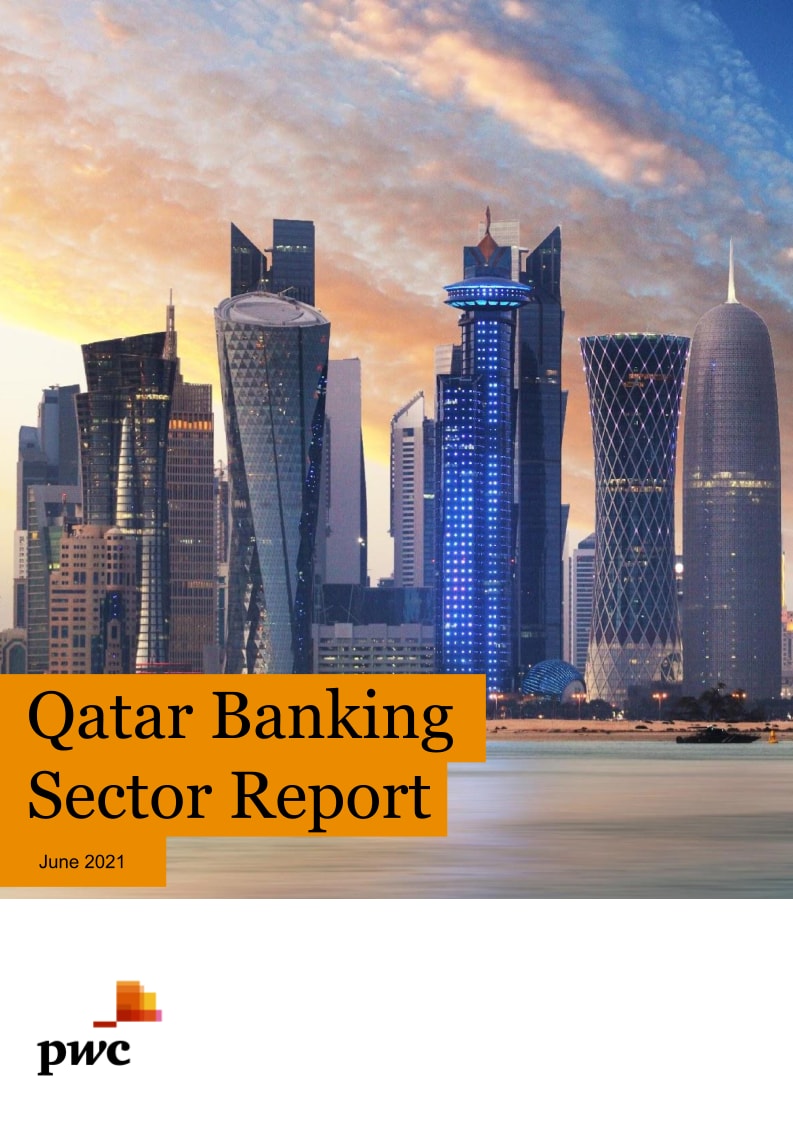
Qatar's Banking Sector report FY2020
2020 was a year of rapid transformation in the way we do business, ignited by the destabilising of economies around the globe impacted by the global health crisis. This is particularly true for the Middle East region due to the volatility in the pricing of natural resources such as oil, also negatively affected by the global health crisis. However, governments in the GCCs were quick to take action in order to reduce the impact of these challenges by focusing on four main areas:
New revenue streams: Banks were seeking new sources of income through measures such as increasing the proportion of fee-based revenue, investing in new sustainable assets, funding SMEs with high potential, and improving the customer relationship through digital solutions.
Attracting new investors: Banks are increasingly shifting focus to ‘green’ products such as green bonds in an effort to attract foreign investments and diversify borrowing options, as stakeholders are starting to invest in Environment Sustainable & Governance (ESG) assets more and more.
Compliance solutions: Banks continue to adopt RegTech solutions and improve data management and digitisation of processes as international regulatory frameworks are increasing in complexity.
IBOR transaction: As Central Banks around the globe are gradually enforcing the phaseout of the intra-bank lending rate (IBOR transition), banks have started redemption initiatives to update contracts booked with IBOR. The exercise requires a closer collaboration between business functions, IT, Legal and Compliance to meet the requests from regulators.
In Qatar, institutions addressed volatility by remaining united and increasing collaboration between the public and private sector. The Qatar Central Bank (QCB) played a vital role in the ecosystem, by combining supervision activities with a series of measures significantly mitigating economic volatility and assisting recovery across the private sector. For example, Qatar Central Bank (QCB) offered repurchase facilities (Repo) at a zero interest*, which helped banks to receive liquidity and reduce the interest/return rate for affected sectors, ultimately boosting their ability to repay the loans in the long run. The eight listed commercial banks have proactively responded to QCB’s support policies as well as revised their financial models based on emerging macro trends. Macro trends are reflected into the financial aggregated data reported by the eight listed commercial banks which show the resilience of the sector through volatility. FY2020 is marked by growth of assets, streamlined non-interest costs as well as an overall decreased profitability level.
In FY 2020, the aggregated balance sheet of the eight listed commercial banks regulated by QCB grew by 7.3% (assets), 7.8% (liabilities) and 3.0% (equity) between FY 2020 and FY 2019. The aggregated total assets of the eight listed commercial banks hit 1.74 Tn QAR as at 31 December 2020, reflected in the 7.0% growth of total aggregated loan and advances which hit 1.20 Tn QAR as at 31 December 2020. This data proves once again that the lending activity remains healthy and in expansion, driven by diversified sources of funding. The increase in the lending activities through loans and advances is a sign of confidence in businesses and the economy, with the eight listed commercial banks maintaining a constant lending strategy also during a volatile market.
On the other hand, volatility had an impact on profitability, showed by a decline of the aggregated profit of the eight commercial banks from a total of 24.65 Bn QAR to 21.59 Bn QAR (-12.43%), compared with FY 2019. The difference is mainly driven by a drop of revenue income (-12.7 Bn QAR), 86.7% of which is contributed by a decline of interest income (-11.0 Bn QAR). Reasons for this income drop are also linked to the aggregated impairment allowance (stage 1,2,3 combined) of the eight listed commercial banks, which increased by 17.3% (FY2019 vs FY2020), showing the risk of credit loss has increased over the last financial year.
A further breakdown of the aggregated impairment allowance of the eight listed banks by sectors, as reported on the financial statements (Large Corporates, Consumer/Retail, SMEs, Real Estate Mortgage) shows that impairment provision for SMEs improved (stage 1,2,3 combined decreased -11.3%) compared to the figures in FY 2019, proving them to be resilient in a volatile environment.
Meanwhile, the aggregated impairment provisions of the eight commercial listed banks for the Large Corporates category grew in FY 2020 to reach 24.2 Bn QAR (+22,5%) in stage 1,2,3, compared to FY 2019. Also, the Real Estate Mortgage sector saw an increase in impairment provisions by +74.0% (stage 1,2,3 combined) while Consumer/Retail’s impairments grew +10.3% (stage 1,2,3 combined).
Overall, the increase in impairment provision as a natural consequence of the volatility experienced in FY 2020, and the outlook for the 2021 performance, remains positive.

Banks proactively reacted to environmental challenges by expediting transformation
QFC and QFCRA have built a robust infrastructure and business environment, which has also continuously attracted foreign investment
QFCRA’s regulated FIs are experiencing positive momentum with aggregated assets, revenues and profitability










